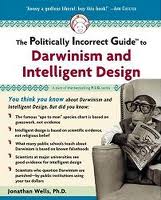 Evolution
Evolution
Cherry-Picking a Definition of “Species”
 What exactly is a species? Good question! Glad you asked.
What exactly is a species? Good question! Glad you asked.
Ernst Mayr said that species are defined by their ability to interbreed or by their refusal to interbreed given the opportunity. But taking into consideration the significant morphological overlap among, for example, Darwin’s finches, this seems like a definition to suit the example rather than the other way around.
In fact, there is no single standard taxonomic definition. Here is a relevant excerpt from Jonathan Wells’s The Politically Incorrect Guide to Darwinism and Intelligent Design (2006):
In their 2004 book Speciation, evolutionary biologists Jerry A. Coyne and H. Allen Orr point out that there are more than 25 definitions of “species” [p. 25-39]. How can we choose among them? “Biologists want species concepts to be useful for some purpose,” write Coyne and Orr, “but differ in what that purpose should be. We can think of at least five such goals.” A species concept is useful, they explain, if it (1) helps biologists to classify organisms; (2) corresponds to the entities in nature; (3) helps us understand how those entities originate; (4) represents evolutionary history; and (5) applies to as many organisms as possible. Coyne and Orr acknowledge that “no species concept will accomplish even most of these purposes,” but they “feel that, when deciding on a species concept, one should first identify the nature of one’s ‘species problem,’ and then choose the concept best at solving that problem.”
Like most other Darwinists, Coyne and Orr choose Ernst Mayr’s “biological species concept” (BSC): “Species are groups of interbreeding natural populations that are reproductively isolated from other such groups.” Why?
“The most important advantage of the BSC is that it immediately suggests a research program to explain the existence of the entities it defines.” Coyne and Orr “feel that it is less important to worry about species status than to recognize that the process of speciation involves acquiring reproductive barriers.”
Note that Coyne and Orr chose their definition of “species” (from among more than 25 candidates) because it suited their Darwinian hypothesis about how species originate.
The cherry-picked definition, in other words, is the one that favors the Darwinian hypothesis. Given the fact that Darwin’s finches can interbreed and have significant morphological overlap, there seems to be little reason not to consider them, simply, varieties.
